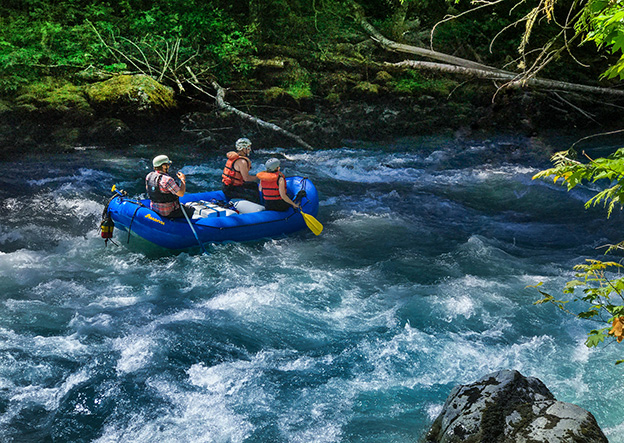Protecting Rivers Through Land Management Plans
The best-known and most enduring method of protecting rivers is the designation of rivers as part of the National Wild and Scenic Rivers System—each designation approved by a separate Act of Congress.
However, significant interim protections for key rivers can be granted through administrative measures by influencing land management planning processes.

Paddling the Nooksack, WA | © Brett Baunton / Wild Nooksack
The Wild and Scenic Rivers Act requires each federal land management agency—the Bureau of Land Management (BLM), Fish and Wildlife Service, Forest Service, and National Park Service who collectively oversee national forests, national parks, national wildlife refuges and national conservation lands—to periodically study rivers for wild and scenic administrative protections.
These river studies typically are undertaken during the revision federal land management plans that guide the daily work of land management agencies. Land management plan revisions include two types of analyses called “eligibility” and “suitability.” Preferably, agencies undertake only an eligibility analysis, but some automatically or choose to undertake suitability following eligibility. For rivers identified as eligible and suitable, the agency is obliged to provide deliberate and defined interim protections for these rivers.
That is where river-protection activists have a key opportunity to influence practical policy and actions on behalf of high-value, healthy local rivers.
INTERMOUNTAIN STATES AND THEIR RIVERS
In intermountain west states, the bulk of federal lands that include rivers with potential for wild and scenic protections are managed by the Forest Service or by the BLM. In response to federal law, both those agencies completed their first generation of comprehensive management plans—for individual national forests and for individual BLM field offices—in the 1980s and 1990s, with congressional instruction to update those plans every 15-20 years. Nearly all plans therefore have either been revised recently or are about to be.
Many national forests and BLM field offices in the intermountain region are currently revising their plans—and studying rivers. These pending and upcoming plan revisions provide key opportunities for river-protection advocates to influence the future management and protection of high-value rivers.
Wild and Scenic Rivers and Planning Background
Wild and Scenic Rivers: an American Legacy by award-winning author and photographer Tim Palmer describes the values of the National Wild and Scenic River System, probes its problems, and addresses its future. This work includes 160 stunning photographs and a lively history involving citizen activists, scientists, dedicated public officials, and enlightened political leaders.